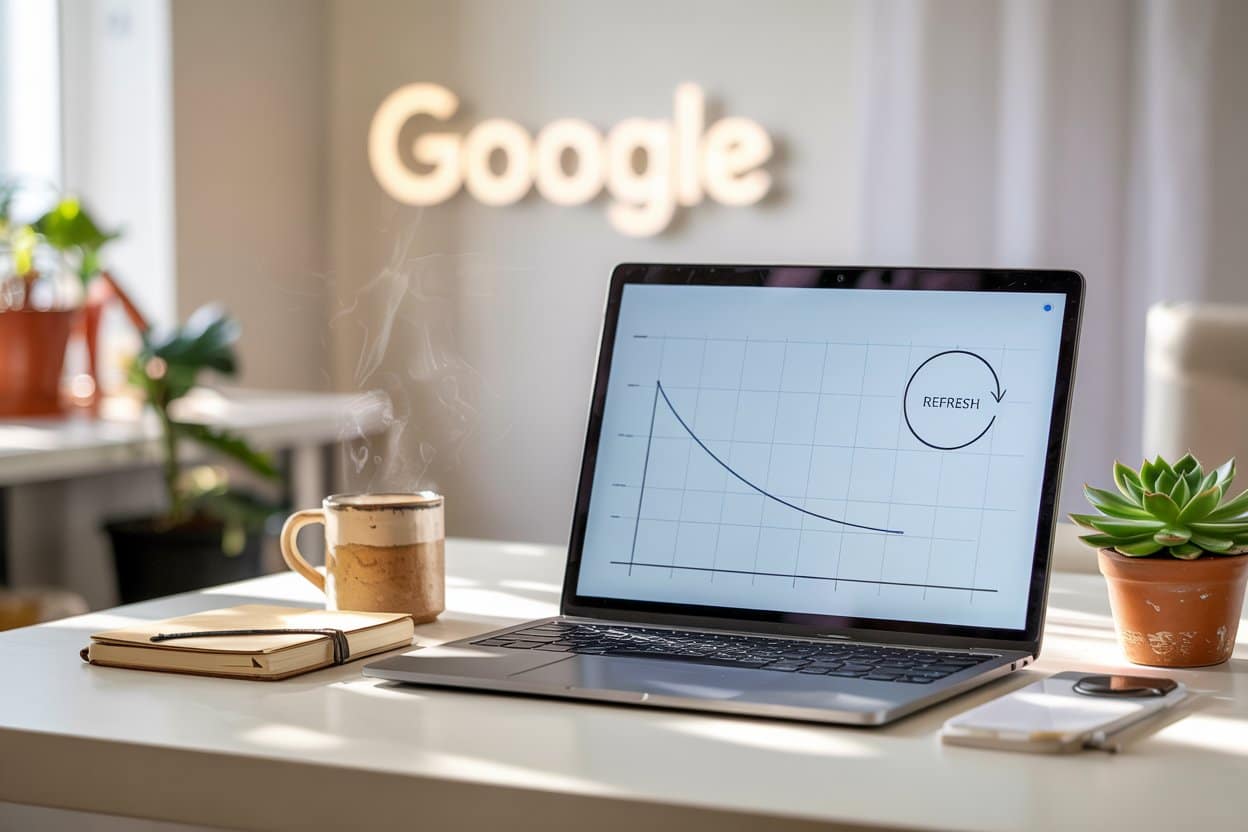SEO rankings became unstable across many industries starting June 4, 2025. Third-party tools like SEMrush Sensor and Mozcast recorded early volatility spikes, especially in mobile search results and local business listings.
Though Google made no official statement, Search Console logs began showing sharp changes in impressions on that date.
By June 9, another wave of shifts hit e-commerce and content-heavy websites. The impact was mixed. Some pages saw drops in organic clicks despite stable rankings. Others gained impressions but showed zero traffic. Forum chatter suggested possible layout tests or SGE related shifts rolling out silently.
Between June 16 and June 18, ranking volatility reached its peak. All major tracking platforms showed the strongest fluctuation signals since the March core update.
Local map results shifted multiple times within 24 hours. Multiple SEO groups reported traffic drops, CTR gaps, and rapid position swings, especially on high-performing transactional pages.
Google has not confirmed a core update, but the patterns suggest background adjustments connected to AI Overviews and zero-click behavior.
Sites with weak internal structure, outdated schema, or poor engagement showed the sharpest decline. The June update may not have a name, but it clearly made its mark.
Lost Rankings After Google Update?
We will audit your website find what hurt your ranking and get back traffic back fast.
What changed in June 2025 Google update
Between June 16 and June 18, 2025, ranking volatility spiked across mobile, local, and organic search. Tools like SEMrush Sensor, Wincher, and SERPmetrics all reported sharp jumps in search result movements. The changes appeared across industries, without warning or pattern.
Many sites saw their local listings drop out of the Google Maps pack, then reappear the next day. Organic results reshuffled quickly, especially on mobile devices. Some page layouts changed too, showing different snippet placements than earlier in the month.
Google has not confirmed any new update. But the data patterns match what usually follows a major algorithm shift. This includes sharp visibility drops, index reshuffles, and more zero-click behavior linked to SGE layouts. The signals were strong, even without a name.
When tracking tools show this level of shift without public rollout, it usually means Google is tuning its core system quietly. That is what changed in June.
How this update affected SEO rankings?
Many sites reported lower traffic while their search positions stayed the same. Search Console logs showed normal impressions, but total clicks dropped. This mismatch points to a shift in how Google users interact with listings, not just where those listings rank.
AI Overviews appear to be a major factor. In some cases, impressions increased because summaries now display above traditional blue links. But users no longer need to click through if answers are shown directly. That reduces CTR even when the page still ranks.
Local businesses saw the Google 3 Pack reshuffle repeatedly. Some listings dropped out during peak hours, then returned with new review highlights or different categories displayed. These sudden swaps changed call volume for many service-based profiles.
Ecommerce pages lost visibility on mobile layouts. Several platforms saw product pages buried under People Also Ask boxes or AI summaries. Even without penalties or deindexing, product reach dropped below expected performance.
Data from June 2025 tracking tools
Several trusted SEO tools recorded strong volatility signals during June 2025, even though Google did not confirm any core update. These movements were not subtle. They reflected high-impact behavior across mobile, local, and organic SERPs.
Each spike came in waves. Tracking platforms like SEMrush Sensor, Mozcast, and SERPmetrics reported movement in keyword rankings, particularly for content-heavy and location-based websites. The biggest spike occurred in the third week of June, affecting verticals like travel, health, and local services.
| Timeline | What the Tools Showed |
| June 4, 2025 | SEMrush Sensor spiked on desktop and mobile. Mozcast showed erratic SERP temperature across informational and transactional queries. |
| June 9, 2025 | SERPmetrics logged ranking drops in local markets. Small business and service-based sites saw organic visibility decline. |
| June 16 to 18, 2025 | SEMrush confirmed strong movement across multiple sectors. Wincher tracked top 3 ranking swaps with no content updates, pointing to systemic behavior. |
| June 18, 2025 | Search Console showed stable impressions but fewer clicks. CTR loss occurred even when positions stayed consistent, likely due to AI layout shifts. |
Search interaction changed even when rankings held steady. That pattern, especially seen on June 18, shows a disconnect between visibility and action.
What SEOs and site owners reported this month
Many SEOs noticed something felt off before the tools even showed it. Traffic started dropping. Clicks fell even when rankings stayed the same. Forums filled up with screenshots and reaction threads. Some sites held position one but lost half their visits overnight.
One user on WebmasterWorld wrote,
“Impressions are fine. But clicks are crashing. It’s like people see us, but never click.”
A Reddit post in r/SEO said,
“Our content did not change. Internal links are clean. But our local map listing disappeared twice last week for no reason.”
Consultants began linking the problem to AI Overviews and layout shifts. Pages that used to earn daily clicks suddenly flattened. Others dropped only in mobile. More than one thread mentioned a structured data mismatch or stale business info affecting trust.
Inside private SEO groups, conversations turned tactical. Several teams tested fresh internal link paths, updated location schema, and reworded content headers. Others flagged zero-click behavior as the real cause. Not a penalty. Just users getting answers too early in the layout.
Lost Rankings After Google Update?
We will audit your website find what hurt your ranking and get back traffic back fast.
Fixes and steps to recover traffic
Start by fixing your internal linking. Link older posts to fresher ones using anchor text that matches user search terms. This helps Google connect related content and rebuild topical flow. Pages that lost rank often had no link signals tied to recent updates.
Next, update your headers and meta titles. Use phrases that trigger rich snippets. Focus each H1 and meta title around clear intent terms. If the search includes comparison, location, or question wording, reflect that in your title structure.
Fix weak layouts. Pages with poor sectioning confuse Google’s parser. Use clear H2s, short paragraphs, and keep related topics together. Semantic layout helps Google extract answers and match them to SGE prompts.
If you removed structured data during earlier updates, add it back. Reintroduce FAQ blocks using updated schema. Pages with relevant FAQ data often show up under snippet groups or get highlighted in AI responses.
Update your local SEO assets too. Recheck your Google Business Profile, sync service areas, and verify operating hours. Add keywords inside your description and use UTM tags to measure profile clicks. A clean GMB signal can pull your listing back into the map pack.
Trends in keyword volatility and ranking shifts during the June 2025 update
Since late April, volatility has shown up nearly every week. Reports came in on April 9, April 16, April 22, and April 25.
Then came May 1, May 8, May 12 and 13, May 16, May 21, May 29, June 4, June 9, and finally June 16 to 18. Despite all of this movement, Google has confirmed only one official update in 2025—the March core rollout.
Everything since has been undocumented, yet highly active. Keyword shifts were uneven. Finance, Health, News, and Food showed the highest volatility. These YMYL categories, tied to trust and product reviews, saw the most movement. Local and niche terms stayed mostly stable.
Pages answering broad questions gained rank. Pages built around one keyword often dropped. Topic clusters with semantically related posts outperformed isolated articles.
Sites with strong Core Web Vitals held steady. Faster pages with stable layout and good INP scores stayed visible. Slow or unresponsive pages dropped as bounce rate signals rose.
Spam-driven results declined. Keywords in risky niches like tech downloads and supplements lost low-quality listings. AI filters removed spam pages, letting clean content rise.






